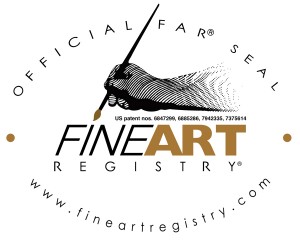Antique: usually any object over 100 years old
Armoire: a very large and highly decorated cupboard or wardrobe
Arts and Crafts Movement: a movement which began in England, influenced by William Morris
Art Deco: the modernist style that began in Paris in the 1920s.
Art Nouveau: introduced in the latter part of the 19th century and remaining popular until the start of the First World War, it was characterised by elaborate design and curving lines. One artist Alphonse Mucha can be said to have led the movement which all began from a poster he created.
Aubusson: French tapestries produced in the town of the same name
Baroque: a hugely flamboyant style of decorating furniture and other objects popular in the 17th and 18th centuries. Typical decorations used were cherubs, flowers, fruit, etc.
Biedermeier: a classical style developed in Germany in the 1820s, particularly seen in furniture which is often made of blond coloured wood
Cabriole leg: popular in the 18th century, the design of a furniture leg based on a curved animal’s leg.
Chasing: a hammered decorative technique used on metal
Chatelaine: Chains, worn at the waist, made to carry keys, a watch.
Chesterfield: a large button-backed sofa
Chiffonier: a cupboard below one large or two smaller drawers with low shelves above or a chest of drawers.
Chinoiserie: European decoration based on Chinese motifs and style, popular in the 17th and 18th centuries
Chippendale (Thomas): An 18th century English furniture maker whose name became synonymous with fine furniture of the period.
Chryselephantine: a substance made from a combination of bronze and ivory used, predominantly, by Art Deco designers
Cloisonné: a decorative technique using metal strips to enclose coloured enamels
Coffer: now used for any chest with a lid on top, once used for a travelling trunk
Commode: the French term for a chest of drawers, also used in American Victorian for a small utility chest.
Console table: a side table usually attached to a wall
Creamware: Cream coloured earthenware pottery; Wedgwood perfected the form.
Cross-banding: thin strips of veneer, cut across the grain, used to decorate furniture
Daguerreotype: A type of photograph invented by Louis Daguerre in 1839 the first photographic image in the camera obscura using asphaltum on a copper plate sensitised with lavender oil that required very long exposures.
Distressing: the process of inflicting minor damage (dents, scratches, stains) to simulate age on a new piece
Dore: A gold gilt bronze object
Duncan Phyfe: A leading American late 18th century furniture maker and designer.
Ebonised: Stained black to imitate ebony wood
Ephemera: Generally collectible items not designed to last, especially paper collectibles like postcards, photographs, posters, etc, derived from the word ephemeral, meaning of the day.
Escritoire: A French writing desk
Etui: a small case for carrying sewing items, sometimes carried on a chatelaine (see above)
Faïence: French tin-glazed pottery
Flatware: flat tableware or silverware
Flow blue: a type of blue and white pottery on which the blue pattern deliberately flows into the white background from heating of the transfer
Gadrooning: A decorative border consisting of a series of curves
Gesso: plaster and size used as a base for gilt decoration usually on pictures frames and furniture
Gilding: gold foil applied to furniture, ceramics, picture frames, etc.
Girandole: a mirror often with candle sconces attached
Grandfather clock: see longcase clock. Named such after a 19th century song, My Grandfather’s Clock
Hard paste: a hard shiny porcelain made from feldspar and kaolin (china clay), this is the true porcelain that originated in China
Hepplewhite: A style created by George Hepplewhite, who authored the book: The Cabinet–Maker and Upholsterer’s Guide
Hollowware: Silver that is in hollow form such as teapots and tankards, etc.
Inlay: a decorative technique where small pieces of ivory, enamel or other material is put into specially hollowed out areas on furniture and treen
Inro: Small flat Japanese boxes, usually beautifully decorated, made to hand from the obi or sash
Ironstone: A kind of strong pottery perfected and patented in the early 19th century by Miles Mason.
Japanning: because genuine Japanese lacquer was not available in Europe in the late 17th century so substitutes like shellac were used to imitate the effect
Jasperware: A fine unglazed coloured stoneware perfected by Josiah Wedgwood with raised relief cameo
Linenfold: a style of carving, used on panelling and furniture, designed to look like folded linen
Longcase clock: a floor standing tall clock
Mackintosh, Charles Rennie: Innovative and influential architect, designer of interiors, furniture and other objects and artist.
Maiolica: Italian tin-glazed pottery, usually colorfully decorated
Majolica: usually applied to English made tin-glazed pottery decorated in the style of Italian maiolica
Marquetry: decorative veneers used on furniture (see also parquetry)
Marriage: a single piece made up from more than one piece of furniture, e.g. a dresser may be made up from a low cupboard and a separate and unrelated set of shelves
Millefiori: often seen in paperweights, this technique uses colored rods fused together and then cut up and enclosed in clear glass to produce patterns
Netsuke: (pronounced netski) small carved Japanese objects which act as toggles (or buttons) to hang things from the obi (sash)
Objets de vertu: sometimes known as objects of virtue, they are small precious pretty trinkets like highly decorated gold snuff boxes, fob seals, scent bottles (note: it is a mistake to mix up the French and English terms, e.g. objects of vertu)
Ormolu: gilt-bronze used to decorative effect on furniture, clocks, etc
Over-restored: some restoration to antiques is often necessary but it has to be done with care so that all the patina and signs of age are not destroyed otherwise the piece will lose value
Papier mâché: pulped paper molded into decorative objects like trays and boxes
Parcel gilt: partly gilded (see gilding)
Parian ware: fine grain porcelain resembling marble, first produced in the mid 19th century at the Copeland factory
Parquetry: similar to marquetry but the veneers are used to form geometric patterns
Patina: the surface built up over time on a piece of furniture, or other object, from continuous polishing and use
Pediment: a triangular gable on top of a piece of furniture in the style found on top of a classical temple
Pembroke table: Possibly named after the Countess of Pembroke, these small tables with drop-leaves
Pewter: an alloy of tin and lead often used for mugs, plates, etc.
Pier glass: a tall mirror designed to hang between windows, popular in the 18th century
Pole screen: a small screen on a pole to protect a woman’s face from the heat of a fire, this was particularly important when make-up would melt if exposed to heat. The screens are often embroidered.
Porcelain: originating in China, true porcelain is made from kaolin (china clay) although in Europe it was imitated usually using white clay and ground glass to produce soft-paste porcelain
Provenance: the documented history of a piece that proves its authenticity
Putti: decorative figures of small male cherubs, much used during the Renaissance
Regency: a style popular from about 1790 to the 1840s based on neo-classical designs, however the true meaning is when George IV ruled as Regent
Renaissance: the period after the Middle Ages, from about the 14th to 16th century during which there was a rebirth in interest in classical Roman design
Restoration: the skilled repair of antiques
Sampler: a piece of embroidery, once usually done by young girls, to demonstrate their skill at stitching
Sconce: a wall mounted candlestick with polished reflecting backplate
Sheraton: Thomas Sheraton was a major designer of furniture in the late 18th and early 19th century.
Skeleton clock: a clock mounted under a glass dome which displays its mechanism
Slipware: items of pottery decorated with slip – a mixture of clay and water
Soft paste: an imitation porcelain
Stereograph: A Victorian invention, this was two almost identical pictured printed side by side and, viewed through a stereoscope, produced a 3D image.
Tambour desk: a roll-top desk where the roll-top is made of thin strips of wood
Tester bed: a bed with a wooden canopy over it (a half tester bed is one where the canopy only covers half of it)
Transfer Printing: a technique for using a paper transfer to impose a pattern on ceramics
Treen: items made from wood
Trembleuse: a saucer with a raised ring to hold a cup steady
Underglaze: a pattern or colours applied before the glaze
Veneer: a thin sheet of often expensive wood cut up to make decorations on furniture, boxes, etc
Vetting: the process, at antiques fairs, where all goods are examined to ensure they are genuine and correctly labeled.
Vitrine: a French display cabinet
Wemyss: Scottish made pottery known for its distinctive underglaze painting
Windsor Chair: a traditional wooden chair with shaped seat and dowel spindle back and saddle seat.





